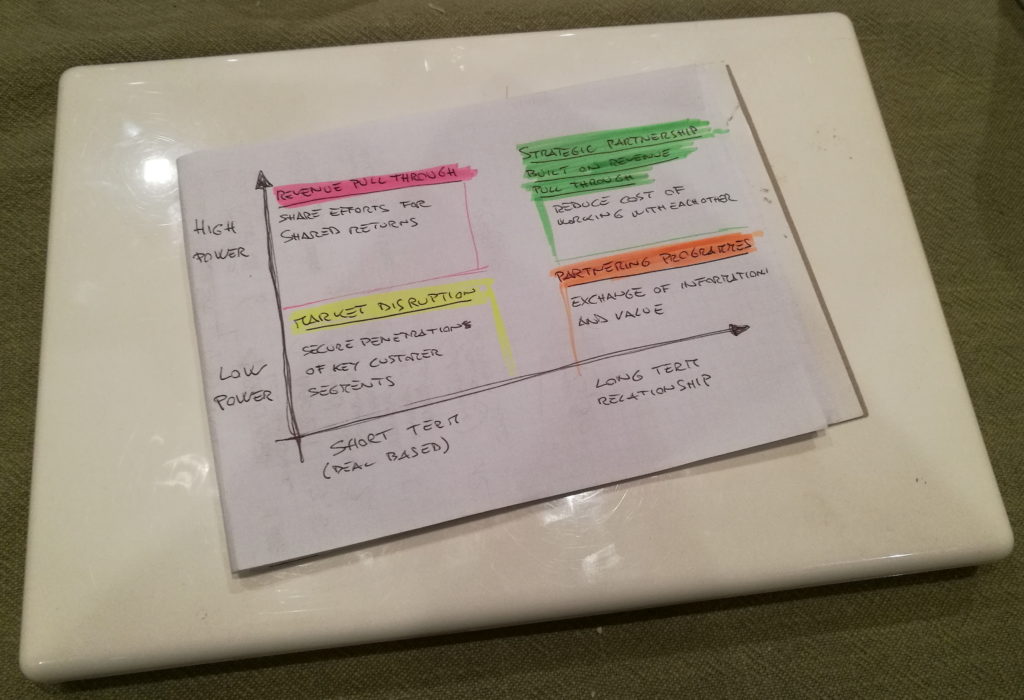
The first 2018 Siav sales meeting for clients took place in Bologna 2 weeks ago, inside the beautiful Lamborghini’s museum. The event was aimed at our direct customers, the company’s main business model. Thinking about it I started asking me: if it had been turned to partners how was it supposed to be? What is the business model for a partner’s channel program?
These are the questions that prompted me to post this article that is a part of a book I’m reading in this period, Distribution Channel written by Julian Dent (the next book of the month), and I hope to support anyone who, like me, is opening a new business channel.
Sell with players
Sell with players… This terminology defines the role in relation to taking products to market. These players don’t handle the product or play any role in getting the product physically from the supplier to the customer, work that is done by the sell-through players. However, these sell with players can be crucial to the selling process in some sectors. In this usually the customers are incapable of defining what they want. In this context people like me, IT consultants, specify the hardware and software architecture needed by businesses (sometimes even to specify the products required to build and implement it). So, we need to:
- Create value;
- Understand the partner’s desire;
- Transfer the activities to the partners;
- Value the offer (from the point of view of the partner).

How does this business model work?
So, how does this business model work? The customer pays fees, which is the dominant compensation model as it’s the customer who has initiated the purchasing process and gone to the player it belives best understands its needs and budget. This creates a challenge for the supplier who is now dependent on the customer advocate to recognize and specify or recommend its products over those of its competitors. So, the suppliers have to inform and educate the customer: This means that the supplier should establish regular meetings, promote discussion of current projects and prospects, provide strong information flow in the form preferred by the customer’s thinking as top of mind and a useful source of answers to technical problems.
Familiar strategies are to provide resources that are valuable to the customer, such as:
- Free technical help, demonstration and extra products that help the customer to do its job a lower cost;
- Training that goes beyond simple product knowledge;
- Broker introductions and leads sourced through the supplier’s own networking, marketing and sales activities;
- Conferences and other events at attractive locations that serve as reward and motivation opportunities to the people of the customer advocate at no cost to its own business.
The next figure shows how the relationship can be promoted depending on the relative market power of the 2 parties and the time horizon to which they are working.

Strategic partnerships are built on shared expetations of long term revenue generation. For them to be successful, it’s essential that both parties invest time and money, and that there is a strong commitment from the top levels of both organizations. The best alliances are those focused on specific markets and opportunities and the relationships is built on predictability of outcome, on clarity of roles, and on communication and consistency: The relationship has to give each side a profit
CONCLUSION
Working with the channel is hard and challenging but really satisfying. The channel will only take relevant and competitive products and services to market. From this point of view it’s essential to pay attention to the basic offering from an end-customer’s perspective. You need a compelling channel value proposition and for your top strategic partners you need to go even further because you have to take the best advantage of the unique combination of resources in your two organizations.
The relationship has to give each side a profit
PS: I hope that Julian Dent does not get angry for the “pieces” taken from his book, for me it was a great inspiration
